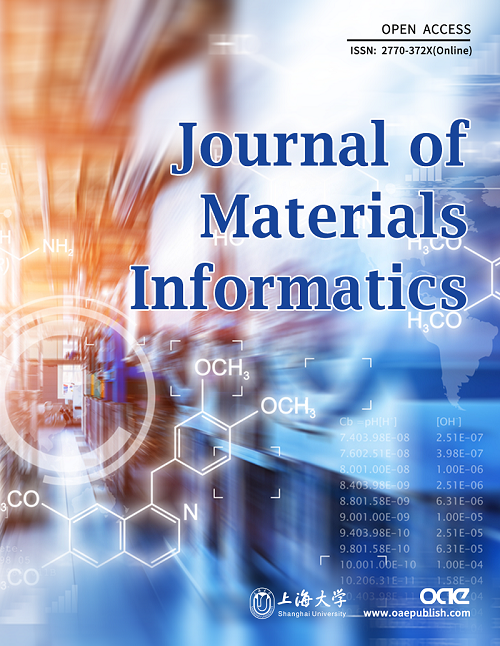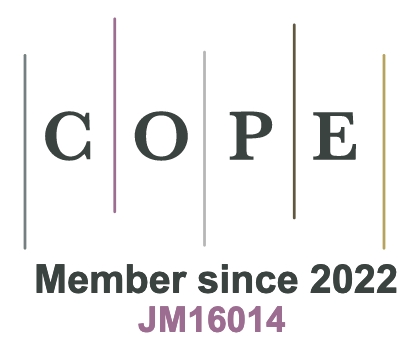REFERENCES
1. Shaqsi AZ, Sopian K, Al-hinai A. Review of energy storage services, applications, limitations, and benefits. Energy Rep 2020;6:288-306.
3. Liu Y, Wu X. Review of vanadium-based electrode materials for rechargeable aqueous zinc ion batteries. J Energy Chem 2021;56:223-37.
4. Shu ZX, Mcmillan RS, Murray JJ. Electrochemical intercalation of lithium into graphite. J Electrochem Soc 1993;140:922-7.
5. Li W, Sun X, Yu Y. Si-, Ge-, Sn-based anode materials for lithium-ion batteries: from structure design to electrochemical performance. Small Methods 2017;1:1600037.
6. Wan F, Zhang Y, Zhang L, et al. Reversible oxygen redox chemistry in aqueous zinc-ion batteries. Angew Chem Int Ed Engl 2019;58:7062-7.
7. Zhou T, Zhu L, Xie L, et al. Cathode materials for aqueous zinc-ion batteries: a mini review. J Colloid Interface Sci 2022;605:828-50.
8. Zuo Y, Wang K, Pei P, et al. Zinc dendrite growth and inhibition strategies. Mater Today Energy 2021;20:100692.
9. Lu W, Xie C, Zhang H, Li X. Inhibition of zinc dendrite growth in zinc-based batteries. ChemSusChem 2018;11:3996-4006.
10. Naskar S, Ojha M, Gazi TR, Ghosal P, Deepa M. Dendrite growth inhibition in a V6O13 nanorods based non-aqueous Zn-ion battery by a scalable polycarbazole@Carbon nanotubes overlayer. Compos Part B Eng 2023;252:110516.
11. Huang K, Du J, Hu J, et al. Suppressing lithium dendrites by coating MoS2 with different layer spacings: a multiscale simulation study. Chem Eng Sci 2021;244:116795.
12. Yang S, Du H, Li Y, et al. Advances in the structure design of substrate materials for zinc anode of aqueous zinc ion batteries. Green Energy Environ 2023;8:1531-52.
13. Meyer N, Xu H, Wax JF. Universality of the shear viscosity of alkali metals. Phys Rev B 2017;96:094201.
14. Yang S, Chen A, Tang Z, et al. Regulating the electrochemical reduction kinetics by the steric hindrance effect for a robust Zn metal anode. Energy Environ Sci 2024;17:1095-106.
15. Geng M, Northwood DO. Development of advanced rechargeable Ni/MH and Ni/Zn batteries. Int J Hydrogen Energ 2003;28:633-6.
16. Chang M, Chen F, Fang N. Analysis of membraneless fuel cell using laminar flow in a Y-shaped microchannel. J Power Sources 2006;159:810-6.
17. Wilcox G, Mitchell P. Electrolyte additives for zinc-anoded secondary cells I. Brighteners, levellers and complexants. J Power Sources 1989;28:345-59.
18. Tao H, Lian C, Liu H. Multiscale modeling of electrolytes in porous electrode: from equilibrium structure to non-equilibrium transport. Green Energy Environ 2020;5:303-21.
19. Parker JF, Chervin CN, Nelson ES, Rolison DR, Long JW. Wiring zinc in three dimensions re-writes battery performance - dendrite-free cycling. Energy Environ Sci 2014;7:1117-24.
20. Liu J, Guan C, Zhou C, et al. A flexible quasi-solid-state nickel-zinc battery with high energy and power densities based on 3D electrode design. Adv Mater 2016;28:8732-9.
21. Banik SJ, Akolkar R. Suppressing dendrite growth during zinc electrodeposition by PEG-200 additive. J Electrochem Soc 2013;160:D519-23.
22. Wang J, Zhang L, Zhang C, Zhang J. Effects of bismuth ion and tetrabutylammonium bromide on the dendritic growth of zinc in alkaline zincate solutions. J Power Sources 2001;102:139-43.
23. Mansfeld F, Gilman S. The effect of lead ions on the dissolution and deposition characteristics of a zinc single crystal in 6N KOH. J Electrochem Soc 1970;117:588.
24. Wang SB, Ran Q, Yao RQ, et al. Lamella-nanostructured eutectic zinc-aluminum alloys as reversible and dendrite-free anodes for aqueous rechargeable batteries. Nat Commun 2020;11:1634.
25. Qi Z, Xiong T, Yu ZG, et al. Suppressing zinc dendrite growth in aqueous battery via Zn-Al alloying with spatially confined zinc reservoirs. J Power Sources 2023;558:232628.
26. Peng Y, Lai C, Zhang M, et al. Zn-Sn alloy anode with repressible dendrite grown and meliorative corrosion resistance for Zn-air battery. J Power Sources 2022;526:231173.
27. Xue R, Kong J, Wu Y, et al. Highly reversible zinc metal anodes enabled by a three-dimensional silver host for aqueous batteries. J Mater Chem A 2022;10:10043-50.
28. Tao H, Hou Z, Zhang L, Yang X, Fan L. Manipulating alloying reaction to achieve the stable and dendrite-free zinc metal anodes. Chem Eng J 2022;450:138048.
29. Fayette M, Chang HJ, Li X, Reed D. High-performance InZn alloy anodes toward practical aqueous zinc batteries. ACS Energy Lett 2022;7:1888-95.
30. Sun K, Xiao Z, Shen Y, et al. MOF-derived Se doped MnS/Ti3C2Tx as cathode and Zn-Ti3C2Tx membrane as anode for rocking-chair zinc-ion battery. Nano Res 2024;17:2781-9.
31. Shen Y, Liu Y, Sun K, et al. Zincophilic Ti3C2Cl2 MXene and anti-corrosive Cu NPs for synergistically regulated deposition of dendrite-free Zn metal anode. J Mater Sci Technol 2024;169:137-47.
32. Mcbreen J, Gannon E. The electrochemistry of metal oxide additives in pasted zinc electrodes. Electrochimica Acta 1981;26:1439-46.
33. Sun K, Shen Y, Min J, et al. MOF-derived Zn/Co co-doped MnO/C microspheres as cathode and Ti3C2@Zn as anode for aqueous zinc-ion full battery. Chem Eng J 2023;454:140394.
34. Cheng XB, Zhang R, Zhao CZ, Zhang Q. Toward safe lithium metal anode in rechargeable batteries: a review. Chem Rev 2017;117:10403-73.
35. Zheng X, Ahmad T, Chen W. Challenges and strategies on Zn electrodeposition for stable Zn-ion batteries. Energy Storage Mater 2021;39:365-94.
36. Zhao Q, Liu W, Chen Y, Chen L. Ultra-stable Zn metal batteries with dendrite-free Cu-Sn alloy induced high-quality composite Zn mesh. Chem Eng J 2022;450:137979.
37. Zhang Y, Howe JD, Ben-yoseph S, Wu Y, Liu N. Unveiling the origin of alloy-seeded and nondendritic growth of Zn for rechargeable aqueous Zn batteries. ACS Energy Lett 2021;6:404-12.
39. Hu Y, Chen J, Wei Z, He Q, Zhao Y. Recent advances and applications of machine learning in electrocatalysis. J Mater Inf 2023;3:18.
40. Wang Y, Wagner N, Rondinelli JM. Symbolic regression in materials science. MRS Commun 2019;9:793-805.
41. Ouyang R, Curtarolo S, Ahmetcik E, Scheffler M, Ghiringhelli LM. SISSO: a compressed-sensing method for identifying the best low-dimensional descriptor in an immensity of offered candidates. Phys Rev Mater 2018;2:083802.
42. Weng B, Song Z, Zhu R, et al. Simple descriptor derived from symbolic regression accelerating the discovery of new perovskite catalysts. Nat Commun 2020;11:3513.
43. Kresse G, Hafner J. Ab initio molecular dynamics for liquid metals. Phys Rev B Condens Matter 1993;47:558-61.
44. Kresse G, Hafner J. Ab initio molecular-dynamics simulation of the liquid-metal-amorphous-semiconductor transition in germanium. Phys Rev B Condens Matter 1994;49:14251-69.
45. Kresse G, Furthmüller J. Efficient iterative schemes for ab initio total-energy calculations using a plane-wave basis set. Phys Rev B Condens Matter 1996;54:11169-86.
46. Kresse G, Furthmüller J. Efficiency of ab-initio total energy calculations for metals and semiconductors using a plane-wave basis set. Comput Mater Sci 1996;6:15-50.
47. Perdew JP, Burke K, Wang Y. Generalized gradient approximation for the exchange-correlation hole of a many-electron system. Phys Rev B Condens Matter 1996;54:16533-9.
48. Zhou F, Cococcioni M, Marianetti CA, Morgan D, Ceder G. First-principles prediction of redox potentials in transition-metal compounds with LDA + U. Phys Rev B 2004;70:235121.
49. Monkhorst HJ, Pack JD. Special points for Brillouin-zone integrations. Phys Rev B 1976;13:5188-92.
50. Zheng J, Zhao Q, Tang T, et al. Reversible epitaxial electrodeposition of metals in battery anodes. Science 2019;366:645-8.
51. Cai Z, Wang J, Lu Z, et al. Ultrafast metal electrodeposition revealed by in situ optical imaging and theoretical modeling towards fast-charging Zn battery chemistry. Angew Chem Int Ed Engl 2022;61:e202116560.
52. Jain A, Ong SP, Hautier G, et al. Commentary: the materials project: a materials genome approach to accelerating materials innovation. APL Mater 2013;1:011002.
53. Wagner S, Kronberger G, Beham A, et al. Architecture and design of the heuristiclab optimization environment. In: Klempous R, Nikodem J, Jacak W, Chaczko Z, editors. Advanced methods and applications in computational intelligence. Heidelberg: Springer International Publishing; 2014. pp. 197-261.
54. Liu Z, Ren J, Wang F, et al. Tuning surface energy of Zn anodes via Sn heteroatom doping enabled by a codeposition for ultralong life span dendrite-free aqueous Zn-ion batteries. ACS Appl Mater Interfaces 2021;13:27085-95.
55. Jäckle M, Helmbrecht K, Smits M, Stottmeister D, Groß A. Self-diffusion barriers: possible descriptors for dendrite growth in batteries? Energy Environ Sci 2018;11:3400-7.
56. Huang K, Liu Y, Liu H. Understanding and predicting lithium crystal growth on perfect and defective interfaces: a kohn-sham density functional study. ACS Appl Mater Interfaces 2019;11:37239-46.
57. Kim HJ, Kim S, Kim S, et al. Gold-nanolayer-derived zincophilicity suppressing metallic zinc dendrites and its efficacy in improving electrochemical stability of aqueous zinc-ion batteries. Adv Mater 2024;36:e2308592.
58. Yu J, Xi S, Pan S, et al. Machine learning-guided design and development of metallic structural materials. J Mater Inf 2021;1:9.








